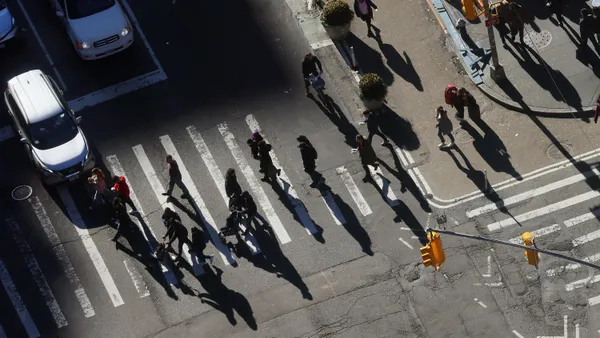Dive Brief:
- A majority (67%) of women and 66% of white women in a recent survey by Morning Consult and ASCEND believe there's a pay gap between men and women, but only 34% of white women agreed that a pay gap exists between white and non-white women. This is in spite of data from the U.S. Department of Labor that show non-white women are paid less on average than white women, Morning Consult features editor Joanna Piacenza wrote in a story accompanying the survey.
- According to 2017 data from the U.S. Bureau of Labor Statistics, Asian women earned 75% of what Asian men earned, while Black women earned 93% of what Black men did and Hispanic women earned 87% of what Hispanic men did. A limited perspective on pay gaps hinders progress on policies that could reshape the issue, Piacenza said.
- White women in the survey were also less likely to describe as "helpful" diversity efforts that explicitly mention diversity, such as making top executives compensation dependent on diversity in leadership and mandatory diversity requirements within a company (52%), than policies that don't mention diversity, such as mentorship programs with top executives and legislation to ensure men and women are paid equally for similar work (67%).
Dive Insight:
Intersectionality is an important consideration for workplaces that value diversity. Bentley University's Gloria Cordes Larson Center for Women and Business (CWB) defines intersectionality as the combination of factors that include racial and ethnic identity, age, sexual orientation, ability/disability, class status, religion, veteran status and cognitive diversity. A CWB study referred to women of color as an example of intersectionality and "double outsiders," being neither men nor white. The research found that the women were held to a higher standard than others and that their areas of expertise were often questioned.
Research has shown a longstanding gap among salaries, not just when male and female salaries are compared but also when the salaries of whites and non-whites are compared, and the gap doesn't seem to be closing. The wage gap between black people and white people was larger in 2018 than in 2000, according to data released by the Economic Policy Institute, a progressive think tank.
There is a business case for diversity; diversity and inclusion can have a positive impact on a company's bottom-line, with potential to increase innovation and increase revenue, according to research. But some companies aren't seeing those results because they are not fully invested, Jenn Labin, chief talent and diversity officer at MentorcliQ, previously told HR Dive.
The CWB has recommended that HR professionals address intersectionality in their diversity and inclusion programs by getting top executives to acknowledge the unconscious bias that can make talent at the intersections difficult for them to see.
Employers also may need to pay attention to the routine aspects of the hiring and compensation process. Recent legislative activity has been prefaced on the idea that setting wages based on salary history reinforces wage gaps. Salary bonuses may worsen the problem, as more are awarded to men traditionally, and black workers tend to be paid less partly because of the imbalanced nature of the salary negotiation process, one study showed. Pay audits can help, but some employers have aggressively approached the issue. Salesforce did so by spending $3 million on two separate occasions to correct gender-based pay gaps that the company discovered after an equal pay assessment.












